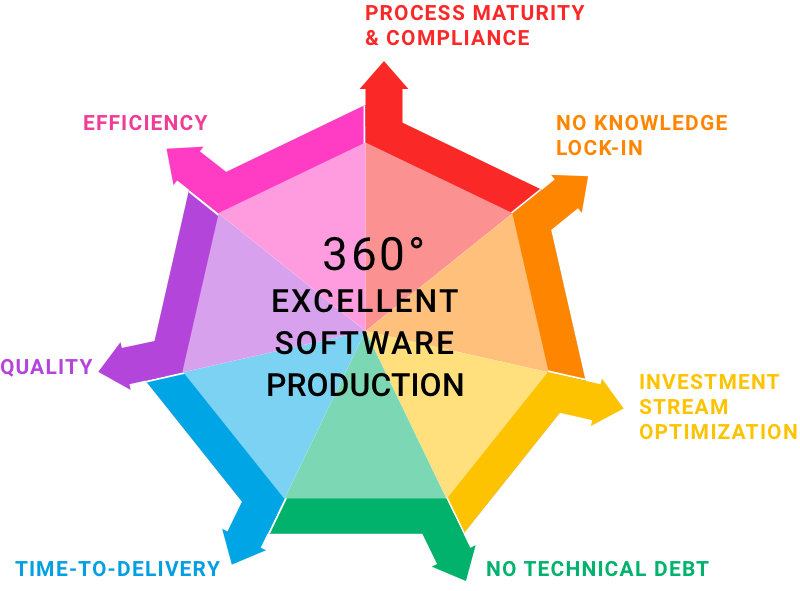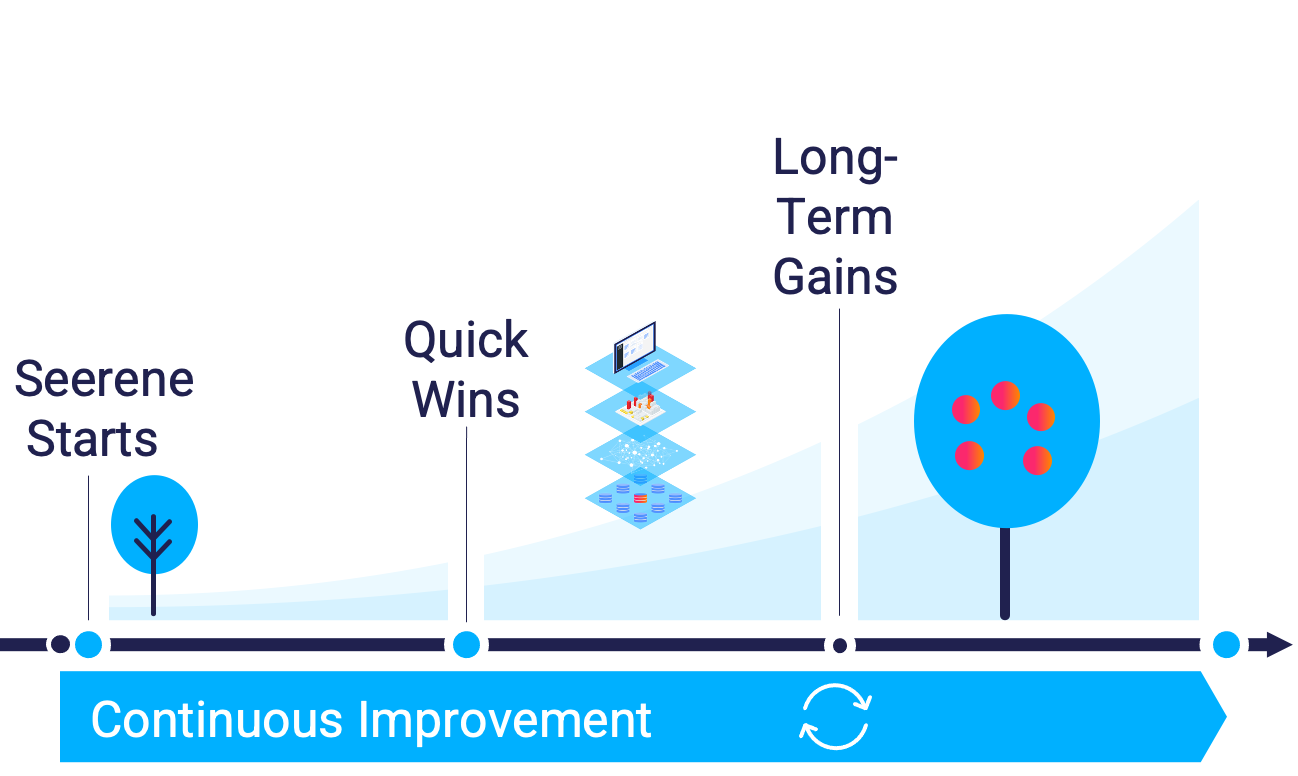Dieser Anwendungsfall gilt für jede Art von Softwareentwicklung, unabhängig von der Prozessmethodik (Wasserfall, agil, skaliert agil, V-Modell, ...) oder der Art der Softwaresysteme (IT-Anwendungen, SaaS, mobile Anwendungen, eingebettete Systeme, ...)
Selbst wenn die Entwicklungsarbeit von einem Drittanbieter durchgeführt wird, sind Sie es, der den Preis für Ineffizienzen im Entwicklungsprozess zahlt. Ein Anbieter wird Ihnen Aufwandsschätzungen vorlegen, die diese Ineffizienzen implizit einschließen.

Ihre Intuition sagt Ihnen, dass es viele Aspekte der Ineffizienz in Ihrer Softwarefabrik gibt, aber Ihnen fehlen die Mittel, um sie zu quantifizieren oder zu identifizieren. Zum Beispiel:
Die meisten Ineffizienzen resultieren aus der komplexen Dynamik zwischen den Aktivitäten in Bezug auf Anforderungen, Code, Tests und Betrieb - und lassen sich nicht ohne weiteres feststellen.
Selbst die Experten in Ihrem Unternehmen können Ineffizienzen nicht quantifizieren und sind gezwungen, sich auf ihr Bauchgefühl zu verlassen.

Mit Seerene können Sie die verschiedenen Aspekte von Ineffizienzen identifizieren und sie in Form von KPIs quantifizieren. Solche KPIs können das ungenutzte Potenzial in Ihrem Unternehmen aufdecken: Derzeit verschwendete Zeit kann in zusätzliche Wertschöpfung umgewandelt werden.
Die quantitativen KPIs von Seerene können dabei helfen, Verbesserungsmaßnahmen auf Aspekte mit hohem Potenzial für die Rückgewinnung zusätzlicher Zeit zu konzentrieren.
Damit wird es deutlich einfacher: Sie können von den KPIs bis zu den Grundursachen von Problemen vordringen. Auf diese Weise erhalten Sie und Ihr Team umsetzbare Erkenntnisse darüber, wie Sie Ihre Organisation Schritt für Schritt verbessern können.

August-Bebel-Str. 26-53
14482 Potsdam, Germany
hello@seerene.com
+49 (0) 331 706 234 0
Generative AI Seerene GmbH
August-Bebel-Str. 26-53
14482 Potsdam, Germany
hello@seerene.com
+49 331 7062340